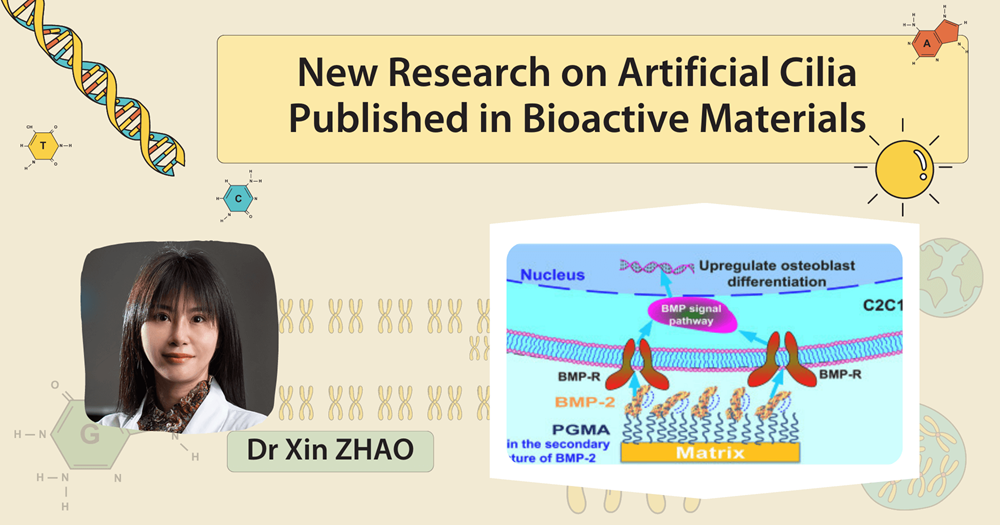(只有英文版本)Preservation of growth factor sensitivity and bioactivity (e.g., bone morphogenetic protein-2 (BMP-2)) postimmobilization to tissue engineering scaffolds remains a great challenge. Dr Xin ZHAO, member of RI-IWEAR, collaborated with Prof. Zijian ZHENG, Associate Director of RI-IWEAR developed a stable and soft surface modification strategy to address this issue. BMP-2 (a model growth factor) is covalently immobilized onto homogeneous poly (glycidyl methacrylate) (PGMA) polymer brushes which are grafted onto substrate surfaces (Au, quartz glass, silica wafer, or common biomaterials) via surface-initiated atom transfer radical polymerization. This surface modification method multiplies the functionalized interfacial area; it is simple, fast, gentle, and has little effect on the loaded protein owing to the cilia motility. The immobilized BMP-2 (i-BMP-2) on the surface of homogeneous PGMA polymer brushes exhibits excellent bioactivity (⁓87% bioactivity of free BMP-2 in vitro and 20%–50% higher than scaffolds with free BMP-2 in vivo), with conformation and secondary structure well-preserved after covalent immobilization and ethanol sterilization. Moreover, the osteogenic activity of i-BMP-2 on the nanoline pattern (PGMA-poly (N-isopropylacrylamide)) shows ⁓110% bioactivity of free BMP-2. This is superior compared to conventional protein covalent immobilization strategies in terms of both bioactivity preservation and therapeutic efficacy. PGMA polymer brushes can be used to modify surfaces of different tissueengineered scaffolds, which facilitates in situ immobilization of growth factors, and accelerates repair of a wide range of tissue types. This research was published in Bioactive Materials, Volume 24, June 2023.
- 人員及架構
- 研究
-
研究成果
-
消息及活動
-
會議
會議
- ICIWS2022
- PAIR Conference 2023
-
關於研究院
- 主頁
- 消息及活動
- 最新消息
發表在《生物活性材料》上的人造纖毛新研究(只有英文版本)
2023年4月28日
我們使用Cookies為您提供更好的瀏覽體驗。如果您繼續瀏覽本網站而沒有更改您的私隱設定,表示您同意我們使用Cookies。如欲了解更多,請參閱我們的私隱政策聲明。
您的瀏覽器不是最新版本。如果繼續瀏覽本網站,部分頁面未必能夠正常運作。
建議您更新至最新版本或選用其他瀏覽器。您可以按此連結查看其他相容的瀏覽器。
我想搜尋...



